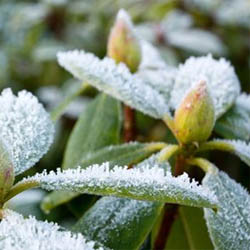
How to Care for Frost Bitten Plants
Springtime in Maryland can be unpredictable! This year we’ve seen everything from warm, picture-perfect days to typical rainy days to downright cold and snowy days. It’s the middle of April and we are still getting frost. This kind of weather takes its toll on your garden and your plants. Even if you cover your plants with frost cloth and protect them with mulch, temperature swings like this can be too much for some plants to handle.
If you have frost-bitten plants in your garden all hope is not lost. There are things you can do to help your plants recover. If you see brown, drooping foliage, it’s dead. But, and this is important but, if the plant has a woody stem, the stem and the root system could still be in good shape. The plant can recover and produce new foliage once the dead stuff is trimmed away.
Tips for Dealing with Frostbitten Plants
Patience is key when dealing with frostbitten plants. It’s important to know when to trim away the dead parts of your plants, how to tell if they’re still alive and how to care for them as they recover. First off, don’t trim away all the brown stuff immediately. Pruning stimulates new growth and if a plant starts producing new growth before the frost is really and truly gone from the forecast, the new growth is just going to get frostbitten. Don’t fertilize your plants either because that also promotes new growth.
Instead, you need to wait. Cover your plants when frost is in the forecast, water as you normally would and wait for spring temperatures to be here to stay. Then it’s time to prune. Be sure to be conservative when pruning because this stresses plants out, which is fine for a healthy plant but in a frostbitten plant it could prove to be too much. Waiting to prune can also let you see exactly where the new growth is emerging, so you’ll know which parts are dead and which parts survived the frost. Clip back to just above the living parts and get rid of the worst of the frost damage.
Now you should leave the plant on its own to recover. Continue to water and care for it but remember to avoid too much pruning and fertilizing. Some people will actually wait until the following fall to fertilize again.
If you have any questions, the knowledgeable staff at Patuxent Nursery will be happy to help you out. We are open seven days a week. Stop by or give us a call at 301-218-4769.



